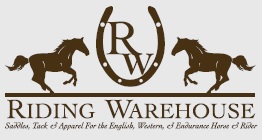Table 'o Contents: Seller tips; Buyer Tips; Breeder tips/bloodline searching; Comparison of search sites I'm not looking for a horse -- couldn't afford another -- but I have to admit I miss the fun of searching now that I have Riley (pictured left at age 3 weeks). Every week or so I pop onto warmbloods-for-sale.com and peruse the horses for sale. Chalk it up to the power of the Internet and the many horse buying-search tools (dreamhorse.com, horsetopia.com, equine.com). With these wonderful tools you can find specify all the traits of your dream-horse down to the last detail. But if you don't search online sales sites, here are some semi-creative search tips.
I'm not looking for a horse -- couldn't afford another -- but I have to admit I miss the fun of searching now that I have Riley (pictured left at age 3 weeks). Every week or so I pop onto warmbloods-for-sale.com and peruse the horses for sale. Chalk it up to the power of the Internet and the many horse buying-search tools (dreamhorse.com, horsetopia.com, equine.com). With these wonderful tools you can find specify all the traits of your dream-horse down to the last detail. But if you don't search online sales sites, here are some semi-creative search tips.
If you've never explored the Advanced Search capabilities of online horse sale sites, take a few moments now to look at Equine.com's Advanced Search screen. You'll notice some nifty options for slicing and dicing your search that have a variety of uses -- for sellers, buyers, breeders, and window-shoppers... Tips for sellers
Tips for sellers
Use Equine.com (or some other site) to run "comps" on your horse. See what other sellers are asking for similar horses in your region. In Equine.com you can specify age, breed, sex, height, location, discipline, training/show experience, bloodlines, and other attributes. Try this:
- Enter your horse's characteristics--age, height, show experience, sex, discipline, etc.
- Limit results to your general geographic area (e.g., 150-200 miles from your location).
- As you review the results:
- Note the asking price -- is it significantly different from your horse's price?
- How long has each horse been for sale? Some of those ads are 6 months old or more.
- If you're asking more for your horse, how is she/he different? You may want to revise your ad to emphasize those strengths; or, if you're having trouble selling your horse, consider if the asking price is competitive in your geographic area.
Some sellers get writer's block when it comes to describing their horse. Do you have trouble crafting ads?
- Do a search for horses with your sale horse's characteristics and see how they are described. Use wording/phrases you like, and you might get some ideas for selling points.
- Are you selling a cribber? A high-strung horse? A horse with some issues? Run a keyword search on the vice or issue to see how other sellers describe their horse's vice or problem.
Tips for buyers
Most horse buyers get pretty savvy in searching for the horse of their dreams. But here are a few suggestions.
- If you're going to look at a horse that is several hours away, do a search within 20-30 miles of that horse's zip code. Perhaps you could find some other horses to see in the area.
- If you find a horse you like, look for other horses for sale by the owner. Travelling to look at several horses is a better use of your time.
- If you particularly like a horse -- for example, one you've seen at local shows -- find out his/her bloodlines. You can do a bloodlines search on sire/grandsire to find horses that may have the same qualities you like.
- Okay, I've been known to do some evil stealthing. If you find a horse you like, search other online sales sites for the horse name (or, if the name is unusual enough, just google it).
- Sometimes there are discrepancies in the info in the ads--like the price! This can work in your favor (quote the cheapest price you find when you call).
- Sometimes other descriptive information will vary--things you wouldn't expect, like the height of a ten year old horse.
- You might just find a critical piece of info, as I once did. A friend of mine was looking at an OTTB from a thorougbred reseller. I found an old ad from about four months before (some sites retain SOLD listings). In this ad, the horse's original owner/trainer listed some significant, permanent soundness issues not mentioned by the current seller, and the asking price was under $1,000. The second seller's price was outrageous in light of the ad we discovered, and the horse was unsuitable for hard work.
If you are interested in certain bloodlines -- as a breeder, or as an owner -- search the "stallion of interest" on equine.com or other sites...
- If you're a breeder considering a stallion for your mare, note how many babies are already on the market. Are they selling fast? The more there are, and the more unsold, the tougher it might be to sell the foal.
- What are the babies like, and are their traits marketable? How tall are they, and what temperament is listed (usually assigned a number 1-10).
- What's the price range for the babies?
- Look at conformation shots. What does he pass on to his offspring?
- Review any pix/video. Does he cross well with TBs? Warmbloods? Particular bloodlines?
- If he has offspring under saddle, look for any that are for sale. What's their competition record? Of course you can also check USDF and other web sites to find this information.
- If you're just interested in bloodlines or your horse's bloodlines, it can be fun to look for your horse's kin online too.
Comparison of horse sale sites
You can look at my Online Horse Sales Ads Comparison Chart, or read a summary below...
Equine.com is a large, popular site with great features overall: flexible geographic searching (breakdown by city, zip code, geographic region); lots of options for searching bloodlines (select generation, sire, dam, damsire, etc); a means of limiting results by prospect, trained, or competed; and by a category called attributes (certain types of awards/recognition). What it lacks is a keyword search and a means of searching by horseid.
Agdirect has a number of unique features, including a bloodlines search that lets you look for certain bloodline crosses (specific sire and dam). You can search by secondar breed, by months of professional training and by search by farm/contact. You can sort results by a number of criteria, including horse height, name, age, temperament, or distance.
Warmbloods-for-sale.com is a specialized, smaller database. It's a wonderful tool for the warmblood afficianado, and it offers a keyword search of the description field. It's search features have some limitations -- the only geographic limiter is state and you can't select more than one state. There is no way to exclude sold horses in a search. There is no means of searching by level of training, you can only search height in whole hands (16, 17, etc.) and the bloodlines search supports only keyword in sire. The price ranges are limited.
Horsetopia's database is an unknown size and the database seems to be geared toward the pleasure/low-end market. It has a healthy set of search capabilities including keyword search and secondary breed search.
Dreamhorse.com supports a bloodline keyword search with limit to generation, and there are checkboxes to limit to gaited only and warmbloods only. It's Year Foaled search allows the shopper to separate weanlings and yearlings. Dreamhorse offers a missing horse search, a search by secondary breed, and you can exclude breeds.















































